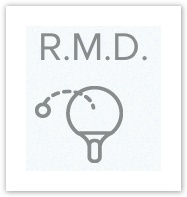Holding effective meetings is just plain hard, which unfortunately prevents most meetings from accomplishing anything. This leaves most people with schedules full of meetings that could have been avoided. Meetings with no agenda. Meetings that are jam-packed with irrelevant tangents. Meetings with no actionable deliverables to follow up on afterwards.
If this sounds familiar, then your team may be suffering from Reckless Meeting Disorder (RMD), a classic symptom of Collaborative Dysfunction (CD). CD effects millions of teams worldwide, most of whom don’t even know they have it.
SYMPTOM: Reckless Meeting Disorder (RMD)

Why do decisions always require meetings? Your calendar looks like a game of Tetris, leaving little time to get real work done.
In other words it’s hard to:
- Reach decisions without bringing everyone together in one room.
- Share a meeting agenda with your team that they can contribute to.
- Track deliverables to completion following a meeting.
CURE: 3 Ways Confluence Alleviates RMD
Confluence, team collaboration software, alleviates Reckless Meeting Disorder by providing one place to create, store, share, and discuss the work your team needs to get done.
1. Hold fewer meetings, make decisions online
Next time a decision needs to be made avoid the knee-jerk reaction of scheduling a meeting and look to Confluence comments. Commenting on Confluence pages and blogs captures the tacit knowledge of your team and makes it accessible to everyone. The content, the question, and the answer all stay in one place for the team’s benefit. There’s no duplication of work or incessant interruptions. The conversations are accessible and contributable by anyone.
When we run projects at Atlassian we aim to avoid meetings like the plague. There are a few tactics we employ to make this a reality.
Click here to learn more about 3 ways to make project management easy with Confluence >>
2. Build and distribute meeting agendas email-free
Confluence doesn’t get rid of all of your meetings, it just helps encourage the meetings that you do have to be focused and actionable. A meeting agenda is the best start to holding a pointed meeting and a Confluence page is the perfect medium.
Ever @mentioned someone in Facebook or Twitter? Confluence @mentions serve the same purpose but in a working context – bringing your coworkers into the work (meeting agenda) they need to know about to get their jobs done. It’s the perfect way to grab someone’s attention and bring them into your meeting agenda you’ve created in Confluence. Best of all, you don’t have to send an email to notify them.
@mentions have helped us at Atlassian to:
- Reduce the amount of email we send.
- Stop valuable the conversations that ensue from getting trapped in multiple email inboxes, never to be found again.
- Allow everyone to benefit from the great ideas that come out of conversations that take place in Confluence.
Click here to learn more about 3 tips for using @mentions in Confluence >>
3. Make meeting deliverables actionable with Tasks
A valuable meeting is one that acts as a launching pad for work – helping determine what needs to get done, by whom, and when. Confluence Tasks provide the structure to accomplish all of that in one place that’s manageable and trackable by everyone.
You can create tasks and assign them (using @mentions) to your co-workers right inside your meeting agenda. When a task is assigned to a teammate they’ll receive a notification in their WorkBox with a description of the task as well as a link to your meeting agenda page where it is located, so they have all the context they need to start working on it.
Tasks make it easy for everyone to track what work has been completed since the original meeting. Forget about the constant juggle of Microsoft Word, your task app, and email – you can do it all in Confluence.
Click here to learn more about keeping your team on-track with Confluence Tasks >>
Try Confluence Today
New to Confluence? Start a FREE 30-day evaluation and see how Confluence can help reduce your team’s reliance on email. It’s time to make work about work again.
